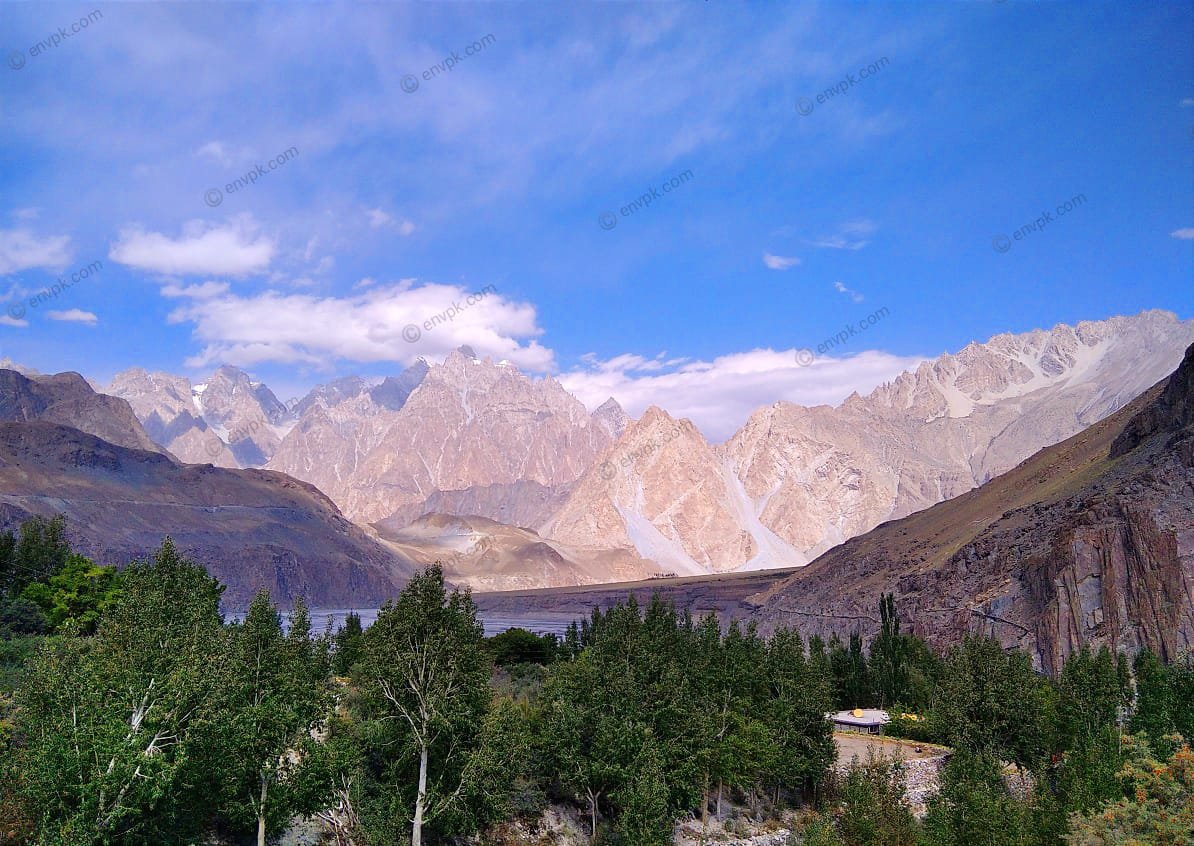Nobody on this planet is going to be untouched by the impacts of climate change.

There is no question that our world is experiencing a crisis that is just beginning to take shape because the effects of climate change are becoming more and more obvious. The third pole of the earth is now shrinking due to the effects of climate change, which include an increase in temperature, glacier retreat, snow avalanches, flash floods, and the Glacial Lake Outburst Flood (GLOF), among other things.
The climate is changing in Pakistan’s mountainous regions, much like it is in other mountainous regions of the world.
In terms of geography, Gilgit-Baltistan is endowed with high mountains (it contains 101 peaks that are found to be above 7000 metres (IUCN 2003), like K-2 (Mount Godwin Austin, the second highest mountain), and Nanga Parbat Rakaposhi, with almost 7,000 glaciers; it is known as the Land of Glaciers). Natural lakes, meadows, sand dunes, waterfalls, the tallest plateaus, a variety of flower species, natural forests, diverse fauna, and natural landscapes may all be found here.
It is also regarded as “Heaven on Earth” since it includes the world’s roof, Deosai. But regrettably, the adverse effects of climate change are no longer immune from invasion in this sanctuary.
Research shows that the temperature of this region is rising at a rate twice as fast as before. The Fifth Assessment Report of the Intergovernmental Panel on Climate Change (IPCC, 2013) indicated that the global mean surface temperature has increased by 0.84°C since 1880.
My grandparents used to say that the “Indus River” was entirely frozen in the winter, but this is no longer the case. What we are witnessing now is a rapid rise in temperature, glacier melting, and severe flooding. As my hamlet is nestled between the mountains, I have personally encountered catastrophic climatic phenomena such as devastating floods, irregular rainfall, and landslides. It will be difficult to convey what I witnessed in words, so I will simply state that all I saw were the terrified expressions of helpless people who appeared to be on the verge of death.
According to a recent study by UNDP Climate Change Adaptation, the average temperature in Gilgit Baltistan is rising at an alarming rate, leading to faster glacier melting. These glaciers are shrinking by approximately 1% per year, leading to the creation of more than 3,000 glacial lakes.
The eruption of Shishper Glacier in Hunza and the Hassanabad Bridge Collapse have caused significant losses of land, homes, and livelihoods, posing a serious threat to local communities, infrastructure, and livelihoods. According to the GB Chief Secretary, 52 houses, trees, cultivated land, and two hydropower plants were affected.
The region’s population relies on natural resources, including glacier-fed rivers for irrigation. However, they struggled with reduced water flow, reduced crop productivity, and decreased forage availability due to unpredictable precipitation, rising temperatures, and increased insect attacks. All of the crops, including the main export, dry fruits, are damaged by uneven precipitation patterns.
Gilgit-Baltistan is also noted for its high biodiversity. But unfortunately, climate change puts this delicate equilibrium at risk. Rising temperatures and shifting precipitation patterns are causing ecosystems to collapse, resulting in habitat loss and species extinction. According to some elders in Gilgit-Baltistan, a decade ago, there were many bird and animal species that are now extinct or scarce.
The famous snow leopard, for example, is endangered due to a loss of adequate habitat and prey. This loss of biodiversity not only jeopardises the region’s ecological integrity, but it also has an impact on tourism, which is an important source of income for local residents.
In addition, the psychological impact of climate change must also be addressed and considered when developing policies to combat it. People’s mental health is deteriorating as a result of climatic disasters, and families and their children are suffering. People become depressed as a result of poverty and property damage. All of these occurrences eventually lead to resource-based disputes among individuals.
Forests and oceans act as carbon sinks, storing excess carbon and regulating environmental temperatures. However, rapidly increasing deforestation (the annual rate of deforestation was estimated at 0.31%) and land demand in Gilgit Baltistan have reduced carbon dioxide storage, causing rising temperatures and glacier melting.
Lack of proper waste dumping sites and lack of regulations hinder marine biodiversity. To address this issue, governments and authorities must formulate monitoring policies for waste handling and disposal.
All of our discussion brings us to the conclusion that there is an urgent need to address the issue of climate change. Communities in Gilgit Baltistan are vulnerable and impoverished, and they are unable to respond to massively devastating events caused by climate change, such as floods.
Long-term initiatives or community-based disaster risk management, adaptations, and mitigation actions should be implemented to save lives, livelihoods, ecosystems, biodiversity, and infrastructure in Gilgit-Baltistan.
To accomplish this, the government should encourage major investments in promoting climate-resilient development and make suitable laws and policies while ensuring their implementation. Overall, we can say that climate is what moulds our entire lives, and in order to increase quality of life, we must keep it as immaculate as possible while also focusing on repairing the damage that has already been done.
This article is jointly authored by Naila Qurban and Ms. Shehnaz Zakia.